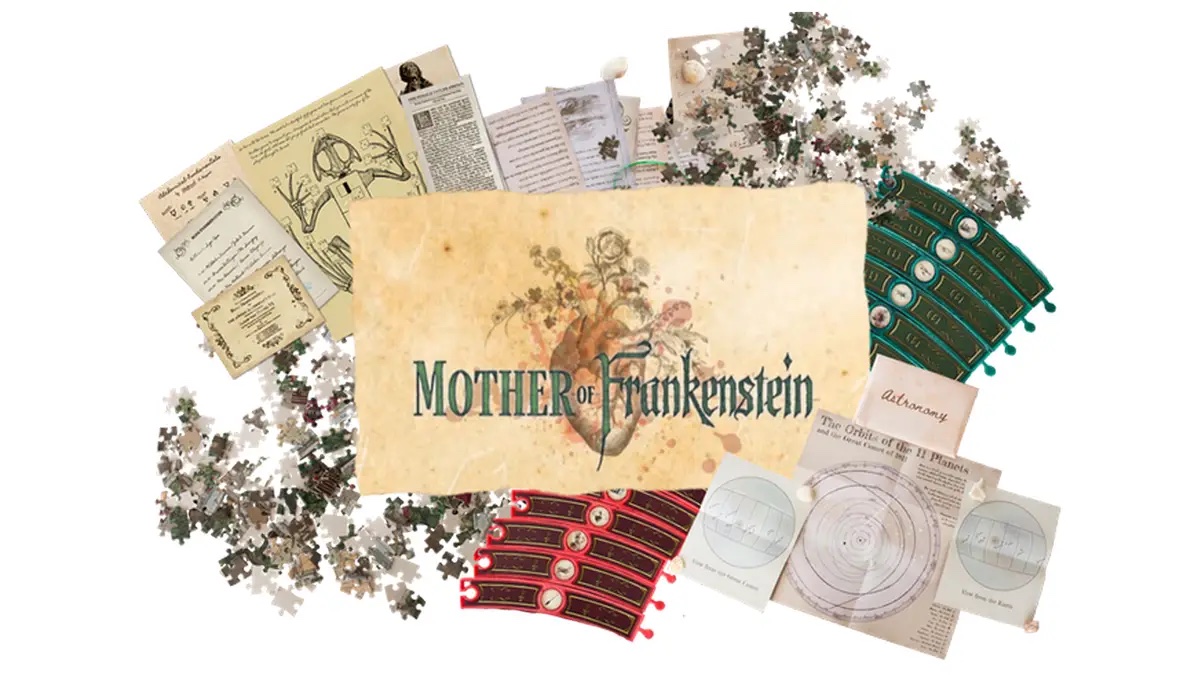On creating a board game that is also a work of literature.
Telling good stories in games is really hard.
It’s hard in any medium, of course, but games provide a set of challenges over and above those faced by novelists and screenwriters. Take the question of agency—if the player is allowed to make the primary narrative decisions in the game, then the story no longer has a comprehensible protagonist; Anna Karenina would hardly be Anna Karenina if the reader could choose to have her board the train instead of dive under it. Of course, if the player is denied the ability to control how the story unfolds, then the designer is giving up the one primary advantage games have over more traditional, static narrative media—interactivity.
I began my writerly career as a novelist, penning five books for Simon & Schuster over the course of that many years. But a little over eight years ago, a friend and I decided to open up an escape room in Los Angeles. I’d first met Terry at an NYU summer program for high-schoolers interested in writing musical theater; almost two decades later, we discovered escape rooms, which brought together two of our perennial passions: immersive theater and gaming. Where others saw a fad along the lines of laser tag or blacklight mini-golf, we saw a new artistic medium.
Most escape rooms don’t feature stories so much as dramatic situations: you’re a bank robber about to pull off one last heist, or a serial killer has trapped you in his basement. Terry and I wanted to try and tell a real story, one with narrative beats, characters, and a climax and denouement. This is particularly tough in an escape room, where a good 90% of the 60-90-minute runtime has to be given over to the players, so they can explore and interact with the space.
It took us two years to finish that first room, Lab Rat, but the year it came out, it was ranked the 8th best escape room in the world. (Yes, there is an international review body with a ridiculously robust ranking algorithm.)
Unfortunately, when COVID struck in 2021, we had to shutter both Lab Rat and the build for our second room, The Ladder. To avoid going crazy (and to bring in some much-needed cash), we conceived a collaborative, narrative puzzle game people could play at home. This time, we set our sights on telling an emotionally affecting story—no easy task in a medium without access to actors (theater/film) or interior monologue (novels). To that end, we came up with a set of design guidelines.
First, we would build our story around actual historical figures. This would immediately ground the narrative in the real world while also giving us a head start in terms of emotional investment. After a lot of discussion, we settled on a speculative reimagining of the life of Mary Shelley, author of Frankenstein.
Second, we would come up with a narrative container for the game that would make all of the puzzles diegetic (i.e., part of the story). The way most puzzle games create diegesis is through some kind of “testing” conceit—”These riddles are here to ensure you are worthy of the powerful magical artifact!” We also went with a testing conceit, but one that replaced the hackneyed and logically implausible puzzles of the “magical artifact” model with a set of challenges rooted in character, emotion, and theme.
Obviously, because players have no connection to Mary Shelley, it wouldn’t make sense for her to be testing them. Instead, we established that the game was designed by Mary as a test for her son, Percy Florence. Mary had a secret she wished to impart to Percy Florence, but in order for him to understand it, he would need to know her life story. Thus the game’s puzzles were meant as a test to ensure he was following along with her biography. (In our conceit, the players came by the game coincidentally, after winning an auction for a collection of Mary Shelley materials at the fictional “Notheby’s” auction house.)
Our third and final major design directive was what’s known in gaming as “ludonarrative consonance”—which describes when gameplay accurately reflects the narrative moment. See, even the most diegetic puzzles built to “test” someone can technically come in any flavor—if all I’m trying to figure out is whether or not you’re clever, I can test you with a math puzzle, a logic puzzle, a spatial reasoning puzzle…anything! Yet we feel something is off when gameplay doesn’t line up with story; our game would strive to avoid this dissonance wherever possible.
It took three years to finish the game, Mother of Frankenstein, which eventually ballooned to three separate volumes and 15 hours of gameplay. MoF features 10,000 words of text, a full 2D and 3D jigsaw puzzle of Castle Frankenstein (a real location in Germany that Mary Shelley is known to have seen on a trip across Europe), and what we hope is the most effective story ever told in this medium.
Mary Shelley is often credited as the mother of science-fiction, both because of Frankenstein and her little-read second novel, The Last Man. It’s only fitting that, in retelling her story, we ended up trying to create a new genre as well.
Mother of Frankenstein is published by Arcane Wonders and is available for purchase here.





